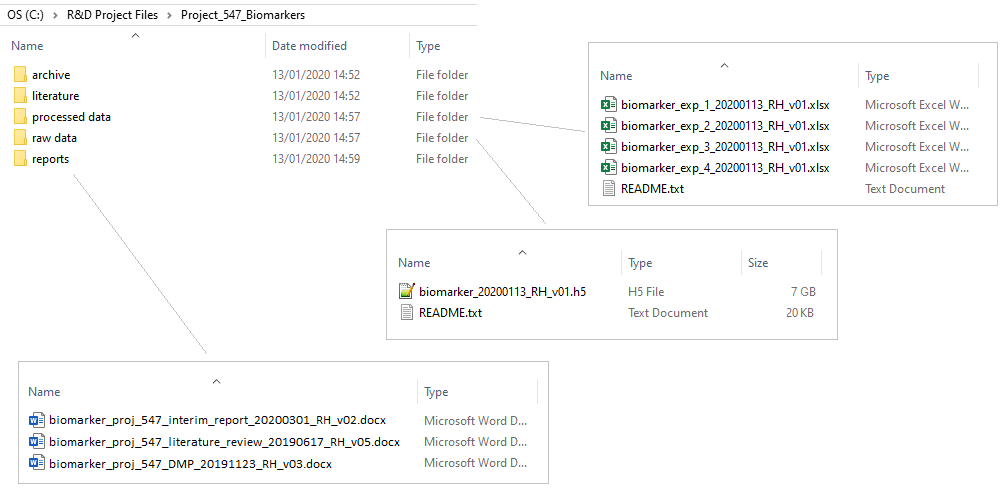Data Management: Data Management Planning
Overview
Teaching: 10 min
Exercises: 5 minQuestions
What is a data management plan and do I need one?
Objectives
Understand the idea of a data management plan
Know when to create one
Data Management Planning
Often with projects that generate data, the datasets produced are relatively small and straight-forwards. For example, a single experiment with a single datafile which contains ELISA plate data is very easy to handle. However, what if you’ve planned a project that is expected to generate 10,000 small files? Or 10 huge files? What if the data is known to be in an uncommon file-format (from, say, an old piece of equipment), or what if you’re expecting outside help to process the data? In cases such as these, planning the data aspects of an upcoming project can be beneficial.
Data management plans are typically short documents that outline the plans for the use of the data throughout the project’s life-cycle. Also note that data management plans are becoming a requirement for many funding organisations. This document should briefly answer the following questions,
- What data will you collect or create?
- How will the data be collected or created?
- What documentation and metadata will accompany the data?
- What statistical methods and tests will you employ? Do you need to calculate samples sizes a-priori?
- How will you manage any ethical issues?
- How will you manage copyright and intellectual property rights issues?
- How will the data be stored and backed up during research?
- How will you manage access and security?
- Which data should be retained, shared, and/or preserved?
- What is the long-term preservation plan for the dataset?
- How will you share the data?
- Are any restrictions on data sharing required?
- Who will be responsible for data management?
- What resources will you require to implement your plan?
The Data Management Planning Tool is a free, online platform that allows data management plans to be created quickly from a range of templates.
Data management plans should be reviewed as a project progressed, and modified accordingly.
As part of a data management plan, it may be useful to create a flow-diagram of the planned data-flow through the expected analysis pipeline, i.e. a visual overview starting with the raw data, through all analysis steps (and associate files used), to the final output.
Example of a good project setup
Now that we’ve covered all the main topics for setting up the files and folders of a project, let’s take a look at an example of a good project setup,

Exercise: Data problems and solutions
Think of a past project where you encountered some sort of data issue. Which of these ideas (file-naming, folder organisation, meta-data, data dictionaries, data management plans) would be useful and why?
Key Points
Projects that are expected to generate a large amount of data, and/or complex data, may benefit from such a plan